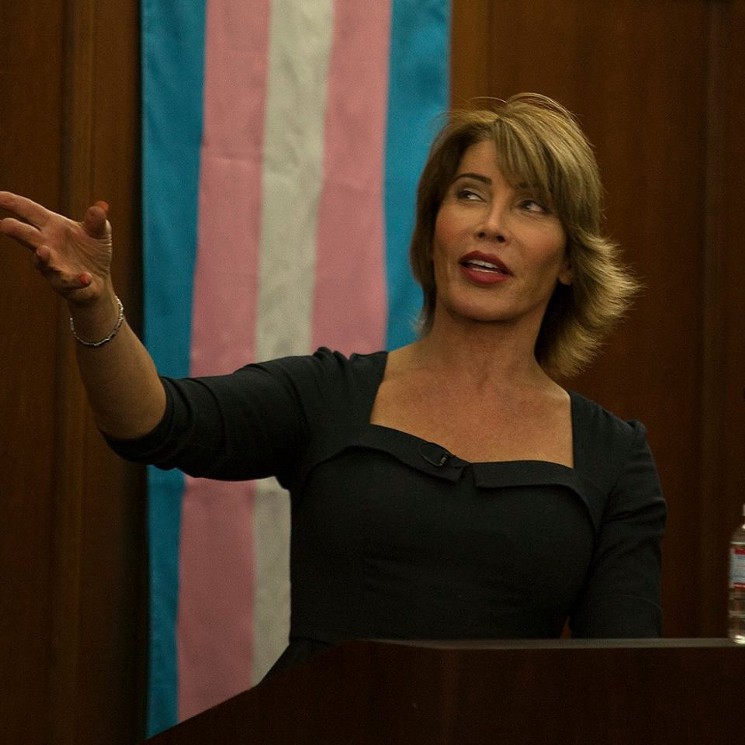Trans Americans face unemployment rates double those of the general population. A new jobs program in California aims to change that.
By Kate Wheeling
(Photo: Joe Raedle/Getty Images)
In 2014, Laverne Cox graced the cover of an issue of Time heralding the “Transgender Tipping Point.” Less than a year later, she was named one of the “World’s Most Beautiful Women” by People magazine. Meanwhile, Transparent, the Amazon series that began in 2014, has won several Emmys. And, last year, Caitlyn Jenner was on the cover of Vanity Fair; nearly 17 million people tuned in for her interview with Diane Sawyer months later.
But the benefits of this increased visibility of trans celebrities has yet to trickle down to most trans Americans, according to Michaela Mendolsohn.
Trans people face unemployment at a rate that is twice that of the general population, and the ones who do find work face significant challenges in the workplace: As many as 90 percent of trans workers report harassment or mistreatment on the job, according to the Center for American Progress. But Mendolsohn, a transgender businesswoman who has been actively seeking out trans employees for her restaurants for about half a decade, has created a program called the California Trans Workplace Program to tackle some of these issues.
Mendolsohn has worked in the restaurant business since 1986, when she signed her first El Pollo Loco franchise agreement. She eventually turned that success into 17 more El Pollo Loco franchises, plus a few other restaurants. Four and a half years ago, the manager at one of those locations hired Kristy, a transgender employee with a heartbreaking story about discrimination and assault at her previous fast-food job.
“Though the stories were somewhat different, they were all pretty much the same in terms of extreme difficulty in getting hired and terrible treatment on the job. At that point I realized that i wanted to do something about it.”
Mendolsohn, who transitioned in 2008, sympathized with Kristy’s story. “I realized how lucky I was to have transitioned as the boss of my own company and not to have to worry about being fired transitioning on the job, or how I’d be treated on the job,” she says. As Mendolsohn hired more transgender employees in her restaurants, she was able to hear more of their stories. She noticed a depressing pattern. “I found that, though the stories were somewhat different from each other, they were all pretty much the same in terms of extreme difficulty in getting hired and terrible treatment on the job,” she says. “At that point I realized that I wanted to do something about it.”

(Photo:
Michaela Mendelsohn
)
Over the last few years, transgender employees have grown to encompass between 10 and 15 percent of her total staff — a huge number, Mendolsohn says, given the University of California–Los Angeles’ Williams Institute’s finding that less than 0.8 percent of California’s adult population is transgender. “It has worked in my little petri dish of restaurants,” she says.
What’s more, over 25 percent of the transgender employees in Mendolsohn’s restaurants have made it to management positions. “It’s a testament to how much these transgender individuals want to take advantage of this opportunity,” Mendolsohn says. “To anybody else it would just be another job.”
Now Mendolsohn is working with the California Restaurant Association to expand job opportunities to transgender individuals throughout the state. She’s coordinating with LGBT organizations to provide guidance to both job seekers and employers. A grant from the state will cover 50 percent of the first 120 hours of wages for each new hire. So far just 10 transgender employees have been hired, but over 100 food establishments are interested in participating. But there’ll be a vetting process of sorts for those organizations: Mendolsohn doesn’t want to send job seekers into restaurants until the management has been through some training.*
This is all the more important in the food service industry, where discrimination and abuse is far too common. A report released earlier this month found that 40 percent of women in the fast-food industry have faced sexual harassment on the job. Mendolsohn says to prevent discrimination, you’ve got to start from the top down. “That’s why we’re educating,” she says.
The owners and managers of all participating restaurants must view a 10-minute training video made by California Trans Workforce Program. The program also provides restaurants with applications that include space for both preferred names and pronouns and legal ones, and sample language for their employee manuals.
Eventually, Mendolsohn hopes to expand the program into other industries, perhaps retail, or the hotel industry — any industry that would get trans people interacting with customers. The idea is that exposure can help reduce stigma.
“If you could imagine this,” Mendolsohn says, “there’s 96,000 restaurants in California, 1.7 million employees, and over 30 million customers. If we get trans people in a lot of restaurants throughout the state, how many hearts and minds can we open?”
*Update — November 3, 2016: This article has been updated to more accurately reflect the funding that the grant provides.





